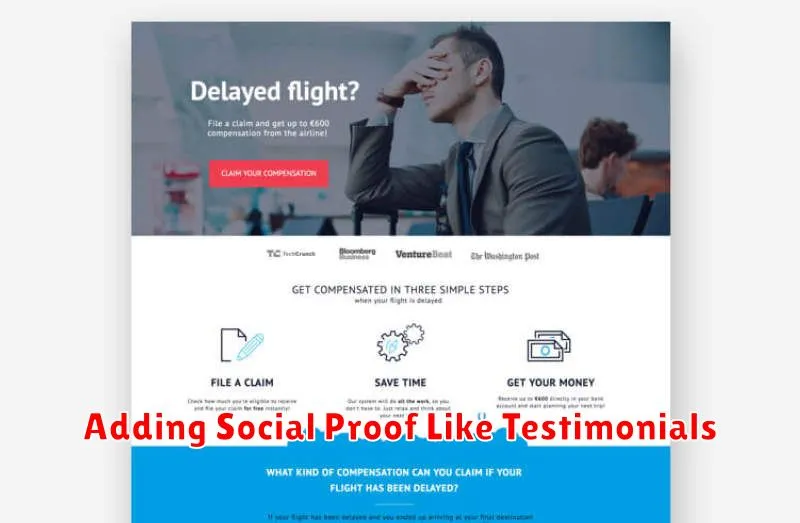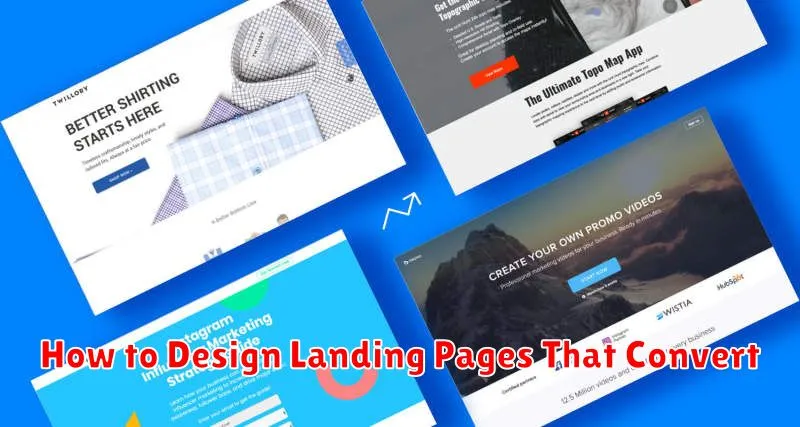In the competitive digital landscape, a high-converting landing page is crucial for online success. Whether you’re aiming to generate leads, drive sales, or promote a new product, understanding the principles of effective landing page design is paramount. This article will delve into the essential elements of creating landing pages that convert, providing you with actionable strategies to optimize your campaigns and achieve your marketing objectives. We will cover everything from crafting compelling headlines and clear calls-to-action to leveraging persuasive copywriting and optimizing for user experience. By implementing these techniques, you can transform your landing pages into powerful conversion machines, driving tangible results for your business.
Landing page design isn’t just about aesthetics; it’s about strategically guiding visitors towards a desired action. This comprehensive guide will explore key aspects such as conversion rate optimization (CRO), A/B testing, and mobile responsiveness. Learn how to design landing pages that capture attention, build trust, and ultimately persuade visitors to convert. We’ll equip you with the knowledge and tools necessary to create high-converting landing pages that maximize your return on investment and contribute significantly to your business growth.
Crafting a Compelling Headline
Your headline is the first, and often the only, impression you make on a potential customer. A compelling headline grabs attention, generates curiosity, and entices visitors to explore further. It should clearly communicate the value proposition of your landing page and be relevant to the ad or link that brought the visitor there.
Focus on creating a headline that is concise and benefit-driven. Clearly articulate the key benefit a user will receive by engaging with your offer. Avoid jargon and hype. Instead, opt for clear, straightforward language that resonates with your target audience.
Testing different headlines is crucial for optimization. Experiment with various wording, lengths, and approaches. A/B testing allows you to compare the performance of different headlines and identify the most effective version for driving conversions.
Consider using numbers or data to add credibility and specificity. For example, instead of “Improve Your Marketing,” try “5 Proven Strategies to Boost Your Marketing ROI.” This provides a concrete value and sets clear expectations.
Using a Clear and Strong CTA

A compelling call to action (CTA) is crucial for landing page conversions. It directs visitors towards the desired action, whether it’s signing up, purchasing, or downloading a resource. A clear CTA eliminates confusion, while a strong CTA motivates visitors to act.
Ensure your CTA button is visually prominent. Use contrasting colors that make it stand out from the rest of the page. The button text should be concise and action-oriented. Use strong verbs like “Get Started,” “Download Now,” or “Claim Your Offer.” Avoid generic phrases like “Submit” or “Click Here.”
The placement of your CTA is also important. It should be strategically positioned where visitors can easily find it, often above the fold. In some cases, repeating the CTA further down the page can be beneficial, especially for longer landing pages.
Minimizing Distractions on the Page
A clean, focused landing page is crucial for conversions. Eliminate anything that doesn’t directly contribute to the visitor completing the desired action. This means minimizing distractions and streamlining the user experience.
Key areas to address include extraneous navigation, excessive animations, and cluttered visuals. Keep the page design simple and intuitive, guiding the visitor towards the primary call to action.
Consider limiting form fields to only the essential information required. Long or complex forms can be intimidating and lead to abandonment. Each element on the page should have a clear purpose and support the overall conversion goal.
Adding Social Proof Like Testimonials

Social proof is a powerful tool for increasing conversions on landing pages. It leverages the psychological principle that people tend to follow the actions of others, especially when uncertain. Incorporating elements like testimonials can significantly impact a visitor’s decision to convert.
Testimonials provide credibility and build trust. They offer potential customers insights from others who have already used your product or service. Showcase positive experiences by featuring testimonials that highlight the benefits and value proposition.
When selecting testimonials, choose those that are specific and relatable to your target audience. Instead of generic praise, focus on testimonials that address common pain points or demonstrate tangible results.
For maximum impact, consider including a headshot of the person giving the testimonial along with their name and title (if applicable). This adds a personal touch and further enhances credibility.
Don’t overdo it. Select a few high-quality testimonials strategically placed on the page rather than overwhelming visitors with a large volume.
Optimizing for Mobile Devices
In today’s mobile-first world, ensuring your landing page is fully optimized for mobile devices is no longer optional, but essential. A seamless mobile experience is crucial for maximizing conversions.
Key considerations for mobile optimization include:
- Responsive Design: Your landing page should adapt flawlessly to various screen sizes, from smartphones to tablets.
- Page Load Speed: Mobile users expect fast loading times. Minimize large images and optimize code for quick rendering.
- Touch-Friendly Elements: Buttons and other interactive elements should be appropriately sized and spaced for easy interaction on touchscreens.
- Simplified Forms: Reduce form fields to the bare minimum to streamline the conversion process on smaller screens.
- Mobile-Specific Content: Consider tailoring content specifically for mobile users, focusing on concise messaging and clear calls to action.
Testing your landing page on a variety of mobile devices is critical to ensure a positive user experience and drive conversions.
A/B Testing Page Elements
A/B testing is a critical aspect of optimizing landing page conversions. It involves creating two versions of a page element (Version A and Version B) with a single differing variable. Then, traffic is split between both versions to determine which performs better based on your chosen conversion metric.
Key elements to A/B test include headlines, subheadings, call-to-action buttons, images (though excluded in this example), form fields, and the overall page layout. Even minor changes, such as button color or text phrasing, can significantly impact conversion rates.
By analyzing the results, you can identify which variation resonates more effectively with your target audience. This data-driven approach allows you to make informed decisions and continuously refine your landing page for optimal performance.
Tracking Conversions With Analytics
After launching your landing page, the next crucial step is to track its performance and identify areas for improvement. This involves setting up conversion tracking within your analytics platform. Conversion tracking allows you to monitor specific actions visitors take on your landing page, such as submitting a form, making a purchase, or downloading a resource.
Begin by defining your key performance indicators (KPIs). These are the metrics that directly reflect the success of your landing page. Common KPIs include conversion rate, cost per conversion, and average order value. Choose KPIs that align with your overall marketing objectives.
Implement tracking codes provided by your analytics platform. These codes enable the platform to collect data about visitor behavior on your landing page. Ensure the codes are correctly placed within the page’s HTML to accurately capture conversion data.
Regularly analyze your conversion data to understand what’s working and what’s not. Identify trends and patterns to optimize your landing page for better performance. For example, if you notice a low conversion rate for a particular call to action, consider revising the button text or placement.

